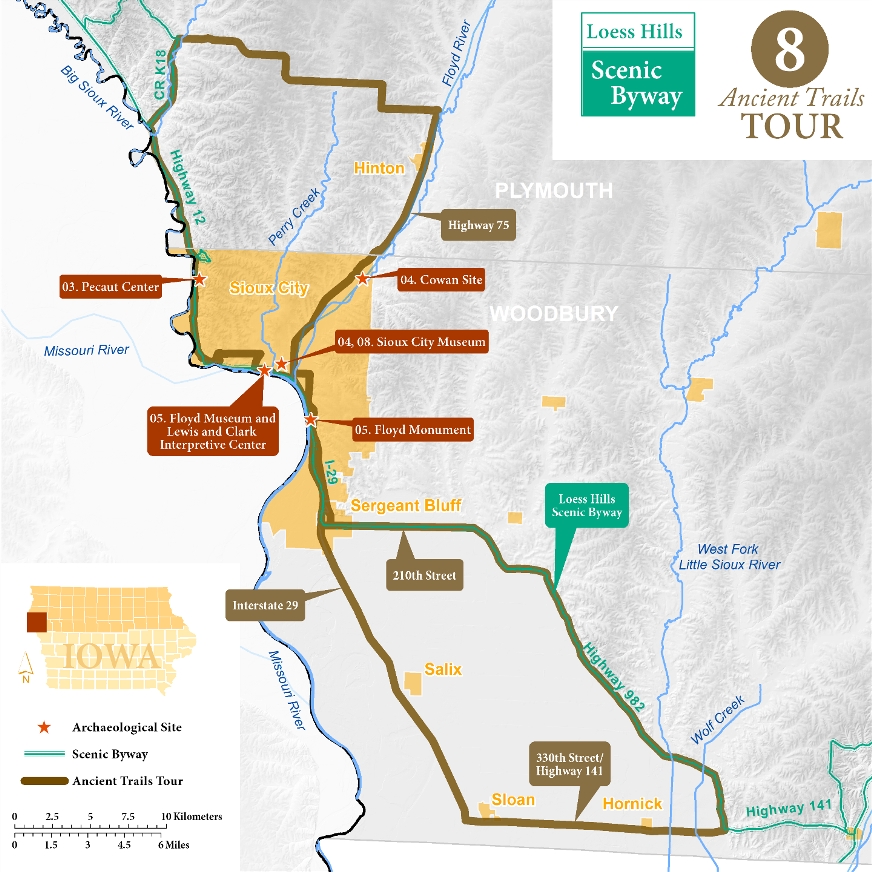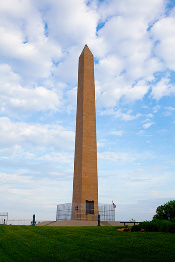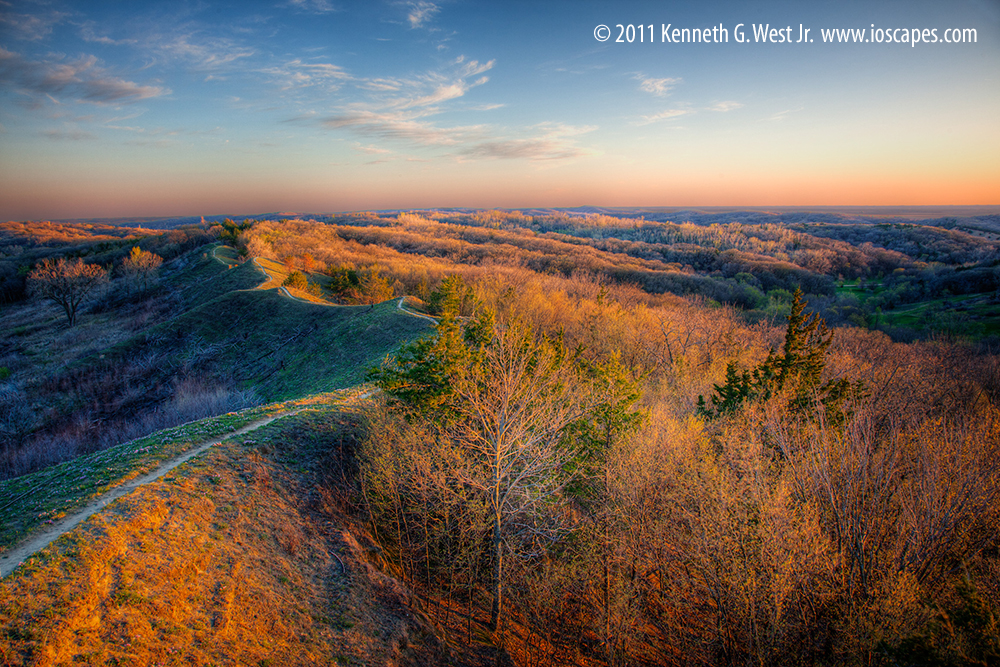
Sioux City Loop Tour
In the mid-1700s the Omaha maintained a village along the Missouri River somewhere south of Sioux City named ttí-ttąga žíga. This village was abandoned when Lewis and Clark noted its ruins in 1804. The Ioway lived upriver. Dakota frequented the area when Théophile Bruguier opened a trading post in the 1840s. Bruguier lived near Riverside Park on the west side of Sioux City, with numerous Dakota camped nearby, led by the Yankton Dakota War Eagle. Other trading posts include Joseph Leonais’ 1853 trading post near 2nd and Water, and a trading post stood near Sergeant Floyd’s monument.
North Loop (48 miles)
Start off at the Lewis & Clark Interpretive Center in Larsen Park (http://www.siouxcitylcic.com/) located next to the Floyd Museum. The interpretive center features permanent and rotating exhibits about the famed 1804 expedition. As you leave heading west on Larsen Park Road, to the north early setters saw Dakota scaffold burials, where the dead were placed on platforms overlooking the area where they camped near Leonias’ trading post. Head north on Hamilton Boulevard, west (left) on W. 4th Street and follow it to War Eagle Drive. At War Eagle Park you can see the burial places of the Dakota leader and his friend Leonias. Descend the bluff to Riverside Boulevard, this area was the core of Bruguier’s French Settlement and War Eagle’s village. Heading north up the Big Sioux valley along Highway 12 and then up Broken Kettle Creek along K18 and you will be in the heart of Late Prehistoric Indian settlements called Mill Creek, where the ancestors of Plains Tribes such as the Hidatsa and Mandan had large villages in the decades before European traders visited. Circle back around following North Ridge/C43 east to 270th to Hickory and Wren to U.S. 75, which runs south along Floyd River, and old route into the interior of Iowa. Floyd Boulevard will take you back to town.
South Loop (55 miles)
From downtown, east on Gordon and south on Lewis will take you to Floyd Park, a monument to the unfortunate sergeant who was part of Lewis and Clark’s expedition. Farther south on Lewis you can visit Floyd’s blufftop grave at Sergeant Bluff. An 1850s trading post was established near this bluff. Take 210th east to Old Highway 141 following the Loess Hills Scenic Byway, and drive along the bluff bottoms, a route mapped by the GLO. Head west on 330th/Highway 141 and catch I-29 north at Sloan. I-29, which, despite its modernity, follows the 1850s GLO trail surprisingly closely, rarely diverging more than 1/4 mile from the ancient trail as it returns you to Sioux City. As you enter downtown and cross the Floyd River, you will drive through a small Dakota village noted by GLO surveyors on 1853. The surveyors chased the Indians away from their home, clearing the way for Euro-American settlement.
Loess Hills Scenic Byway
This ancient trails tour follows the Loess Hills Scenic Byway through Sioux City. Click here for more about the byway.
Archaeological Sites
03. Dorothy Pecaut Nature Center

In addition to the Loess Hills natural history exhibits, you will also see artifacts from the Kimball archaeological site.
The Kimball site was densely inhabited by the Mill Creek culture. Mill Creek culture sites feature abutting earthlodges, while the Glenwood culture's earthlodges were widely separated. A large variety of artifacts from the site included worked bone (awls, fishhooks, knives, chisels, beads, needles, pins) as well as stone artifacts (drills, knives, arrow points) and accompanied works of art, pipes, beads, and shells carved into fish.
To Visit
Website
Address: 4500 Sioux River Road, Sioux City
Phone: 712-258-0838
04. The Cowan Site and the Origins of the Middle Missouri Tradition

The Cowan Site is a classic example of Great Oasis culture, emerging about 1000 CE and bearing many of the aspects of historic Plains Indian life: earthlodges clustered in hamlets, intensive maize farming, and trade connections to the Mississippian cultures to the southeast.
Excavated in 1995 and 1998, archaeologists estimate that 18 to 31 people lived at the Cowan Site. While not uncovering any houses, this number is inferred through the number of pot shards found at the site.
To Visit
The Sioux City Public Museum, 607 4th Street, Sioux City, has displays of artifacts from excavations and collections of the region, and currently has a long-term display of artifacts from the Cowan site.
05. Sergeant Floyd's Grave-- America's First National Monument

With the 1803 Louisiana Purchase, new lands came into the possession of the United States. While the Mississippi River Valley was well integrated into the European trade networks, territories to the west were unknown. The Lewis and Clark expedition was dispatched to survey this area.
Passing through Iowa in 1804, the Corps of Discovery left behind one of their members. Sergeant Charles Floyd died August 20, 1804, and was buried near on a bluff near present-day Sioux City.
The site was rededicated on Memorial Day, 1901, an ceremony attended by thousands. Floyd's monument became the very first National Historic Landmark on June 30, 1960.
To Visit
The Sergeant Floyd River Museum and Welcome Center is located nearby at 1000 Larsen Park Rd. (712-279-0198).
04, 08. Sioux City Public Museum
Here, you will see artifacts from the Kimball site and interpretative exhibits about the Mill Creek culture.
To Visit
Sioux City Public Museum
607 4th Street, Sioux City
Directions and Parking

